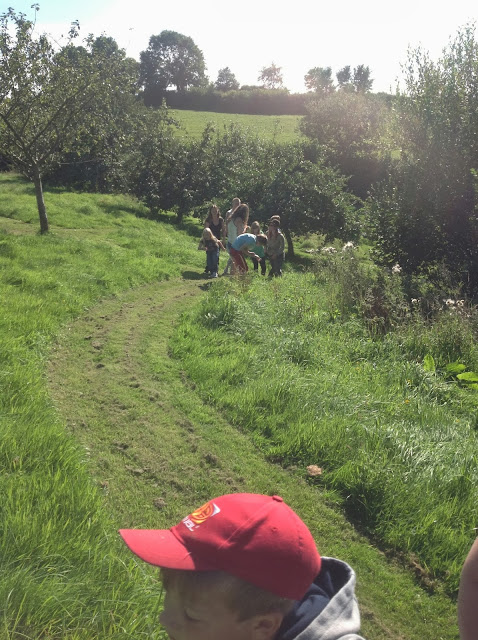FOX CLUB EXAMINES OWL PELLETS AT LANTALLACK
Jenny, Rowena and I hosted an owl pellet inspection day on 31st August. Jenny explained all about the different owls that were present at Lantallack - tawny owls, barn owls and the little owl (which sadly hasn't been seen for a couple of years) and exactly what an owl pellet was.
Owls, like many other birds, eat their food whole. Since birds do not have teeth, they can't chew their food, so they use their strong, sharp beaks to rip their prey apart (very often voles, small rabbits, moles etc) and then swallow large chunks whole. The owl slowly digests its meal by separating the softer materials (such as meat) from the harder material (such as bones). It then regurgitates the harder material along with indigestible items such as feathers and fur in the form of a pellet.
Jenny brought her stuffed Barn owl which is so beautiful... and weightless.... with stunning feathers.
We have had a Barn owl in our big bank barn for quite a while and over the last year I have been collecting his pellets and putting them in my studio.
Jenny and Rowena soaked the owl pellets for an hour or two to make them easier for everyone to dissect. When the children (and adults - who couldn't resist joining in!) began to break them up to search for the bones of the tiny animals the owl had eaten, they just fell apart and what they found was so exciting!
Lots of vole skulls, thigh bones, hip bones, jaws teeth etc. etc.....here is a vole's skeleton.
Obviously there are plenty of voles around here - especially in the orchard where it doesn't get heavily grazed and large tufts of grass become 'des res' (desirable residence) for voles. They particularly love burrowing down at the roots of the apple trees, where they can munch their way through (amongst other things) the fallen apples. Like many rodents, they are scavengers and eat what they can. Their diet can vary because they eat what is available. Diets can include grasses, plants, bulbs, seeds, roots, flowers, leaves, bark and insects.
So after they had finished pulling their pellets apart, everyone was exhausted, so we decided to go down into the orchard and look for voles habitat.
All in all, it was a very enjoyable day!!!!















